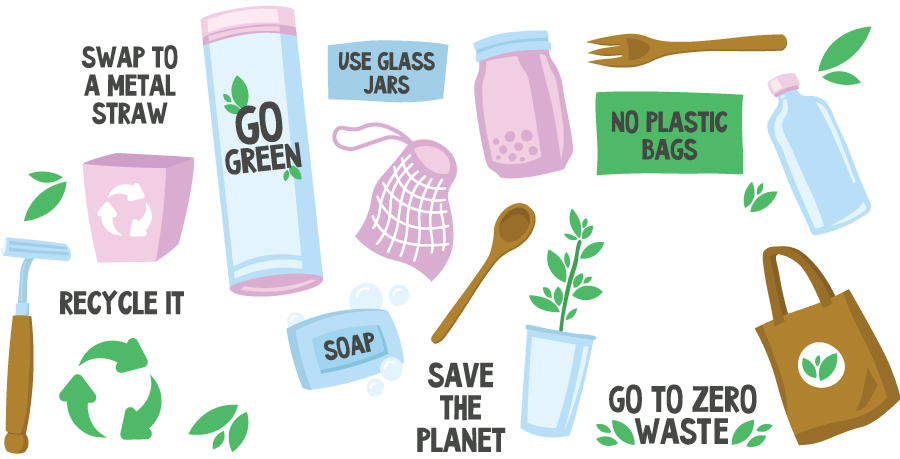These days plastic has become a dirty word for the eco-conscious community, and for good reason too. It takes centuries for plastic to break down, during which it poisons our ecosystem and kills millions of wildlife. Most plastic waste ends up in the oceans, where it breaks down into microplastics and once that waste spreads throughout the water column, it becomes absolutely impossible to recover them.
These microplastics are then ingested by animals and humans, who are then exposed to chemicals and suffer various other complications. At this point, microplastics have been found everywhere in this world – from Mariana Trench, the deepest trough to Mount Everest, the highest peak.
In spite of all the harm it causes, plastic has its merits too. Plastics have greatly benefited mankind by revolutionizing healthcare and sterilization in the form of disposable syringes, gloves, IV tubes and catheters and providing increased comfort with hypoallergenic medical devices, heart valves, and flexible prosthetics. So, it is unlikely and unrealistic to think that we will one day eliminate the use of plastic entirely from this world. However, it is no secret that our world is fast reaching its capacity to carry all the plastic being used. The impact of all this accumulating plastic waste is suffocating our environment and endangering our health equally.
 So what can we do? To begin with, the most effective thing to do is to reduce the unnecessary use of plastics. Among the most notorious habits we humans have, the constant use of single use plastics is perhaps one of the worst. As a result, the first step an individual can take to protect our environment is change our lifestyle to avoid using such products. To make things easier for you, we have picked out some great substitutes for single use plastic products below.
So what can we do? To begin with, the most effective thing to do is to reduce the unnecessary use of plastics. Among the most notorious habits we humans have, the constant use of single use plastics is perhaps one of the worst. As a result, the first step an individual can take to protect our environment is change our lifestyle to avoid using such products. To make things easier for you, we have picked out some great substitutes for single use plastic products below.
Straws:
Think about all the drinks we’ve been handed with a plastic straw – a straw that we only used for that drink and discarded without a second thought. In a country like ours where the garbage collection system is inefficient and which has a very low rate of recycling, odds are that all those plastic straws have ended up in some ocean or landfill from where it will continue to circulate and pollute our ecosystem for thousands of years. So, next time say no to that straw the waiter offers with your drink.
If you must use one, instead of opting for the regular plastic ones, carry your own reusable metal straw.

Reusable bottles/thermoses:
Although we might think that it’s ok to purchase bottled water as most are packaged in PET or PETE plastic which is almost 100% recyclable, in reality only about 9% of all plastic products actually get recycled. It is actually less expensive for companies to produce new bottles than to recycle. At most, the plastic water bottles we discard gets down-cycled into carpets, apparel, etc., however, over time there comes a point when this open loop recycling process renders the final products non-recyclable and ultimately adds to the ever-growing plastic waste.
Therefore, if we make a habit of carrying a water bottle/thermos and refilling instead of buying bottled water every time we get thirsty, we will be doing the environment a huge favor. Even if you are using a reusable plastic bottle, the important thing is that you are reusing it instead of discarding a new plastic bottle every time.
Sanitary napkins:
If you are a woman, you are no stranger to pads or tampons. However, did you know that a single menstruating woman can use between 5-15,000 pads or tampons in her lifetime, all of which contain plastic and contribute towards the accumulating plastic waste in the landfills and oceans?
If you can get over the ick-factor and begin using reusable sanitary napkins or menstrual cups, just think of how much plastic waste you will be reducing single handedly. It’s definitely worth a try!

Reusable containers:
Since most of our products are packaged in plastics, especially products we use every day, we can cut down on our plastic consumption by buying products such as hand wash, detergents, grains, cleaning supplies, and other non-perishable goods in bulk and storing them in reusable containers. For instance, if you buy a 5-litre bottle of hand wash it will come in a plastic packaging for sure, however it will come in one plastic bottle as opposed to 10 different plastic containers if you bought them individually.
So then, why not opt for a pretty ceramic soap dispenser and refill it from the 5-litre bottle instead? Your sink will look nice and there will be a tiny bit less plastic waste in our oceans because of you.
Silicone lids and bags:
It’s high time that we cut cling wraps and Ziplock bags out of our lives. These are one of the most notorious single-use plastics out there, aiding our convenience so much that we tend to ignore how deadly they are to the environment.
